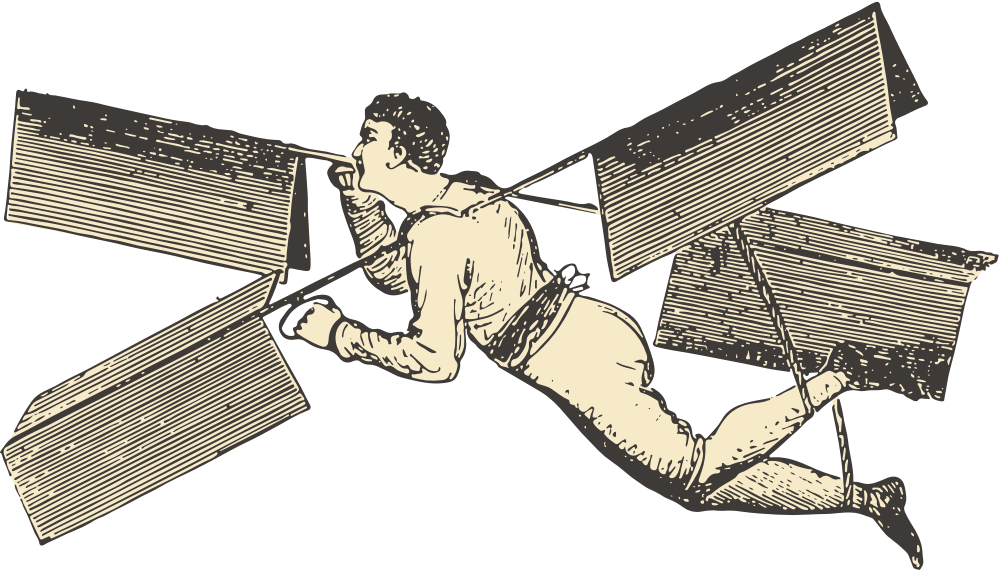Men on the Moon
July 20, 1969, saw mankind take one giant leap. On that day 50 years ago, Commander Neil Armstrong first stepped onto the surface of the moon, followed by pilot Buzz Aldrin. The Apollo 11 mission that got them there started four days earlier, on July 16, and this month marks its 50th anniversary. You’ll find artifacts from the Apollo 11 mission and beyond on our scavenger hunts all around the country. Here are some of our favorite pieces of the space program.
Land Ho!
You can’t very well land on the moon without a moon lander. One such lander, sibling to the very piece of machinery that plunked the first two humans on the surface of the moon, resides now at the Cradle of Aviation Museum on Long Island. Six Grumman LM-5 “Eagles” landed a dozen astronauts on the moon from 1969 to 1972—the museum’s module was meant for the ultimately canceled Apollo 19 mission in 1973. Fun fact: The lander looks so goofily boxy and unwieldy because it was a true spacecraft, only ever operating in the vacuum of space, so it didn’t need to be aerodynamic.
Suit Up
For the first time in 13 years, Neil Armstrong’s spacesuit, more or less identical to Buzz Aldrin’s suit above, will be on display at the National Air and Space Museum in Washington, D.C. And if you can’t make it to a scavenger hunt there this summer, you can find replica spacesuits on display in 15 Major League Baseball stadiums around the country.
Space Cooties?
The Air and Space Museum’s Udvar-Hazy Center, in Fairfax, Virginia, holds a piece of Apollo 11 history designed with one thing in mind: moon germs. After their return to Earth, the three astronauts of Apollo 11—Armstrong, Aldrin, and pilot Michael Collins (who never set foot on the moon)—spent almost four days in NASA’s Mobile Quarantine Facility “to prevent the unlikely spread of lunar contagions.” What a welcome home party!
Tight Fit
At the Museum of Science, Boston, marvel at a model of a Mercury capsule. Project Mercury’s cramped, one-person capsules put the first American astronauts into space—John Glenn became the first American to orbit the Earth in 1962. A mere seven years later, thanks in large part to Mercury’s successes, America would reach the moon.
You Call That a Computer?
As his Mercury capsule orbited the Earth three times in 1962, Glenn couldn’t exactly whip out his iPhone if he needed to perform calculations. No, he had to turn to his, ahem, “Satellite Hand Computer.” As you can see in this display in Cleveland’s Great Lakes Science Center, it amounted to nothing more than a set of slide rules tucked into the back of his capsule’s operating manual. Imagine being in space with only that thing to help you survive in an emergency.
Rock On
You can find a lunar rock or two in museums all over the country—or a whopping four at the American Museum of Natural History in New York. Unlike, say, the big meteorite in the above shot of the museum’s Rose Center for Earth and Space, these rocks are pretty small and unimpressive. Except for the part where they traveled in some astronaut’s pocket (or wherever they kept rocks they picked up from the moon) some 240,000 miles to be here.
To the Moon, Apollo
In 1968, about seven months before Apollo 11, man went to, and around, the moon for the first time on the Apollo 8 mission. It was also the very first crewed launch of the famed Saturn V rocket and the first human spaceflight out of the shiny new (at the time) Kennedy Space Center in Florida. You’ll find the command module from Apollo 8 at Chicago’s Museum of Science & Industry.
Space Oddity
Looming 60 feet tall, weighing 7,000 pounds, and visible from practically everywhere in the Science Museum of Minnesota, this enormous floating astronaut is called Escape Velocity. It was an instant hit and has long out-lived the original space-exploration exhibit it arrived with. The astronaut started out as a roving art installation in 2014 at Coachella, the annual music festival in California. In fact, it was a “kinetic sculpture” capable of limited movement (such as making a peace sign with its hand), though its animatronics sadly didn’t make the trip to Minnesota with it.
Space Seeds
Scattered around the U.S., with a handful planted abroad, are some 80 or so “moon trees.” These trees grew from seeds carried around the moon by the Apollo 14 mission, as part of an experiment to see how space travel might affect them. As they grew into perfectly normal trees, the Forest Service gave donated dozens of the trees to cities around the country and world in 1975 and ’76 to celebrate America’s bicentennial. You can find the moon tree above in Lasdon Park in New York State.
The Control Room Where It Happened
Just in time for the Apollo 11 anniversary, NASA has unveiled a newly refurbished Apollo Mission Control Room at Johnson Space Center in Houston. Restored in loving detail, including screens that flash through images from lunar descent, the control room looks much as it did during countless missions—including Apollo 11 and Apollo 13, of “Houston, we have a problem” fame. (Sadly, we do not offer scavenger hunts here, but it felt wrong to exclude this incredible piece of history.)
As Seen on TV
Of course, if you really want to get in the Apollo 11 spirit, join a scavenger hunt in Hollywood. It was there, as we all know, that Stanley Kubrick was hired to film the supposed “moon landing” on a sound stage so America could defeat the Russians in the space race. (Kidding! We’re kidding! Please don’t punch us, Buzz Aldrin.)
